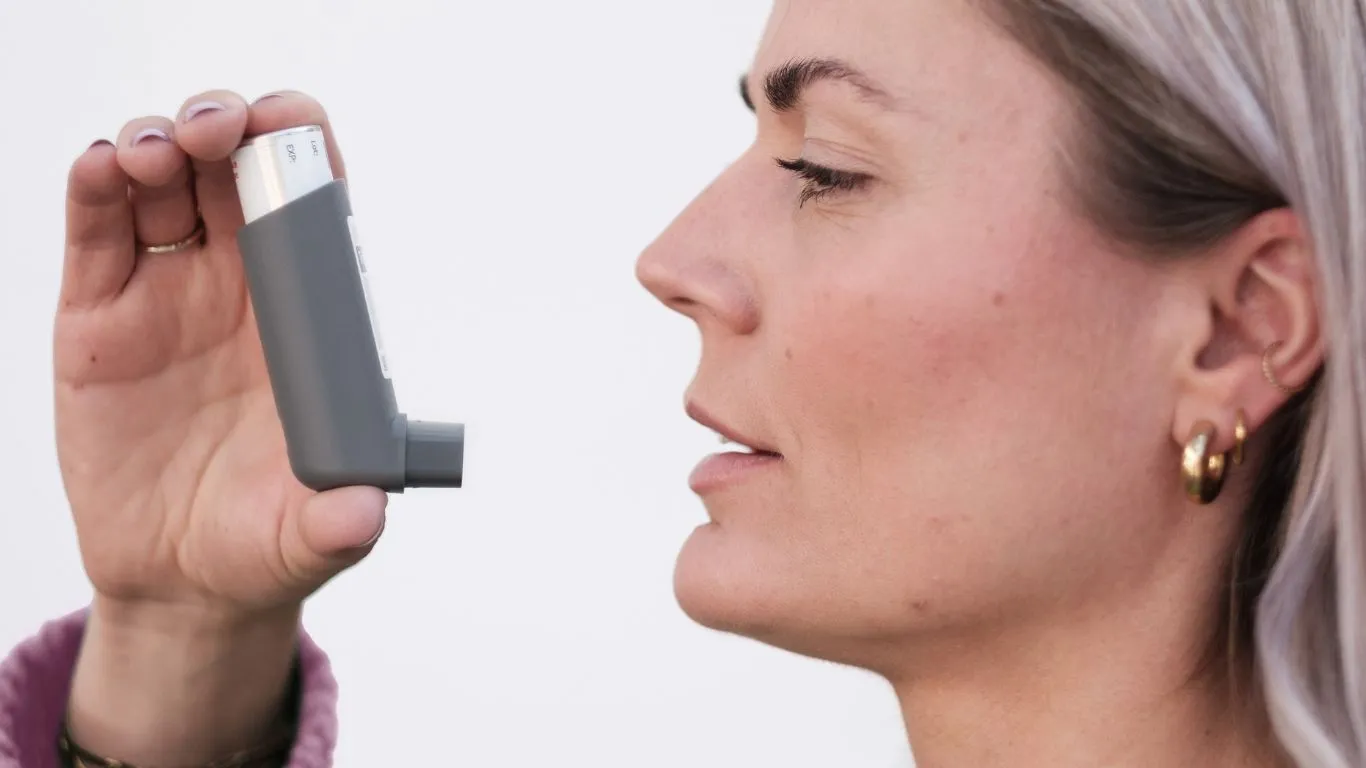Shocking Truth: Can Asthma Cause Temperature Sensitivity Symptoms?
If you’ve ever wondered, can asthma cause temperature sensitivity symptoms—you’re not alone. I’ve had plenty of patients come in, scratching their heads, trying to figure out why their breathing gets worse in the cold, or why they suddenly feel winded when it’s hot and humid outside. As a pulmonary nurse practitioner, I’ve seen firsthand how the weather can play tricks on our lungs, especially for folks with asthma. Temperature swings can absolutely be a trigger, but let’s break down why that happens and what you can do about it.
Understanding Asthma and Its Triggers

What Exactly Is Asthma?
Let’s start with the basics—asthma is a chronic condition that causes inflammation and narrowing of the airways. That means the tubes that carry air in and out of your lungs are more sensitive and react to things that most people wouldn’t even notice. When triggered, these airways tighten up, get inflamed, and can fill with mucus—making it tough to breathe.
Now, not everyone’s asthma is the same. Some folks are triggered by pollen or dust, others by pet dander, strong smells, or even stress. And yep, temperature changes are a sneaky trigger too.
Why Weather Matters When You Have Asthma
This is where things get interesting. Our lungs are kind of picky. They like clean, warm, and moist air. When the air gets too dry, too cold, or suddenly shifts from one extreme to another, it can mess with the delicate balance in your airways.
From my own experience working in clinics during winter and hot summer spells, I’ve seen a noticeable spike in asthma flare-ups during those temperature extremes. Cold air, in particular, can be brutal. It dries out the airways, making them more likely to tighten and react. Hot, humid air? That can feel heavy and thick, especially for someone already struggling to get a deep breath.
Can Asthma Cause Temperature Sensitivity Symptoms?

Let’s Talk Symptoms
So what kind of symptoms are we talking about here when temperature kicks in as a trigger?
- Shortness of breath when stepping into a cold room or outdoors in winter
- Wheezing or coughing when breathing in hot, humid air
- Chest tightness—that uncomfortable pressure that feels like something is sitting on your chest
- Increased mucus production, especially in the cold
These symptoms can sneak up fast. I remember one patient, a marathon runner with well-controlled asthma, who came in after a morning run in chilly air. Even though they had warmed up inside first, just breathing that cold air was enough to send them into a coughing fit. We had to adjust their inhaler routine and talk about layering a scarf over their mouth when exercising outside.
The Science Behind Temperature Sensitivity
Here’s the science-y part (but I promise to keep it simple): your airway linings are lined with tiny nerves that react to cold, dry, or hot air. When those nerves are irritated, they can cause the muscles around your airways to tighten. If you already have asthma, this response is exaggerated. It’s like your lungs are saying, “Nope, not today.”
Humidity also plays a role. High humidity can make the air feel heavier and harder to inhale, while low humidity dries things out. And when you throw allergens or pollutants into the mix (which are often worse in extreme temperatures), you’ve got a recipe for a flare-up.
Everyday Tips for Managing Weather-Related Asthma Symptoms

Simple Lifestyle Changes That Help
I’ve worked with so many patients who’ve found relief by making just a few simple changes:
- Use a scarf or mask to warm the air before it hits your lungs in winter
- Stay indoors during extreme heat or cold, especially if air quality is bad
- Run a humidifier in dry seasons to keep your airways happy
- Use your rescue inhaler before going out into known trigger environments
- Keep track of the weather and adjust your routine accordingly
These may seem like small tweaks, but they can seriously cut down on flare-ups. And let me tell you—avoiding that 3 a.m. wheeze-fest is always worth it.

Personalizing Asthma Management Plans
One of the biggest things I’ve learned over the years is that asthma is not one-size-fits-all. Every patient is a little different. Some can hike in winter without a hitch, while others get tight-chested just walking from their car to the front door on a cold morning. So, when we talk about can asthma cause temperature sensitivity symptoms, it’s not just a yes—it’s a “yes, and it shows up differently for everyone.”
What I usually do is help my patients identify *their* unique patterns. We sit down, pull out calendars and weather apps, and look for trends. If someone’s wheezing more often during seasonal shifts, or they’re constantly needing their rescue inhaler during cold snaps, it’s time to tweak their action plan.
There’s real value in observation. And when patients learn to connect the dots between temperature and their breathing, they feel more in control—and that’s half the battle.
Boosting Environmental Awareness
Here’s something I always emphasize: being aware of your environment is a game-changer. For example, when my patients travel, I advise them to check both the weather forecast and the air quality index. A sunny day might seem perfect, but if the air quality is poor or it’s unusually humid, that’s a red flag for some asthmatics.
Using apps like AirNow or even your basic weather app can clue you in to conditions that may worsen symptoms. That’s especially important if you’re heading into unfamiliar climates or places with higher pollution levels.
When to Reevaluate Your Asthma Plan

Signs Your Current Routine Isn’t Cutting It
Let’s be honest—what worked for you last year might not be doing the trick anymore. If your asthma is acting up more frequently during temperature changes, that’s your cue to check in with your provider. Some warning signs include:
- Using your rescue inhaler more than twice a week
- Waking up at night coughing or wheezing
- Having to skip activities you normally enjoy
- Feeling like you’re “just getting by” instead of thriving
I remember one patient—a school teacher—who thought she had everything under control. But once winter rolled around, her symptoms skyrocketed. Turns out, her controller meds weren’t quite strong enough, and the cold morning air during school drop-off was triggering silent inflammation. A small tweak in her dosage and using a scarf over her nose made all the difference.
What an Updated Plan Can Include
Depending on what we’re dealing with, a plan might include:
- Stepping up daily maintenance meds during extreme weather months
- Adding a peak flow meter to monitor lung function more closely
- Scheduling earlier or more frequent follow-ups
- Adjusting exercise routines to avoid outdoor activity in harsh temps
It’s not just about medications either. Education and timing go hand-in-hand. That’s why I always recommend reviewing your action plan twice a year—once before summer, and once before winter hits.
How Temperature Sensitivity Differs by Age and Lifestyle

Kids and Temperature-Sensitive Asthma
Let’s talk about the little ones for a second. Children with asthma often can’t articulate what they’re feeling, but they sure can show it. I’ve had parents come in worried because their child suddenly refuses to play outside when it’s chilly. Turns out, that cold air was making them feel breathless, but they didn’t know how to say it. I always suggest keeping a symptom journal and watching for subtle signs—less energy, coughing during play, or needing more frequent inhaler use.
Active Adults and Athletes
I also see a lot of adults—especially active folks like runners, cyclists, or gym buffs—who get frustrated when their performance dips in extreme temps. The truth is, even well-conditioned lungs don’t like rapid changes in temperature. And if you already have asthma? That impact is doubled.
One athlete I worked with actually switched her training schedule to late afternoons instead of early mornings to avoid the sharp cold. We also used a bronchodilator before exercise and introduced breathing warm-ups. These types of custom strategies keep people doing what they love—without paying the price later.
Seniors and Temperature-Triggered Flare-Ups
And for older adults, temperature sensitivity can sometimes fly under the radar. I’ve seen patients attribute their breathlessness to “just getting older,” when in reality, their asthma wasn’t being fully managed during weather changes. In these cases, we often have to look at more than just medication—we talk about indoor air quality, heating systems, and keeping humidity levels stable inside the home.
Helping people of all ages understand how weather affects their breathing is one of the most rewarding parts of my job. When you finally piece together those patterns and find a rhythm that works, it’s a huge win—not just for your lungs, but for your overall quality of life.
Practical Tools and Habits to Reduce Temperature-Related Asthma Flare-Ups

Gear That Actually Helps
Okay, let’s talk tools—because having the right gear can seriously make a difference when it comes to dealing with temperature sensitivity symptoms caused by asthma. This isn’t about overhauling your life; it’s about making small adjustments that add up.
One of my favorites? A breathable scarf or mask in cold weather. It helps warm and humidify the air before it reaches your lungs. I keep one in my bag at all times, just in case. You can also find athletic masks with built-in filtration and thermal layers—great for winter runners or folks who work outdoors.
For indoor spaces, a humidifier is gold during dry winter months. Just be sure to clean it regularly (yep, mold buildup is a whole different asthma trigger). In the summer, air conditioning can keep humidity and pollutants in check, but make sure to use a good quality filter and change it often.
Apps and Tech You Can Use
These days, there are plenty of tech tools that make asthma management way easier:
- Weather + Air Quality Apps: Use apps like AQI (Air Quality Index), AirNow, or even built-in weather apps to avoid bad-air days.
- Smart Inhalers: Some inhalers now track usage and send reminders to your phone. Helpful if you’re forgetful or tracking trends.
- Asthma Journals: Old-school or digital, it’s great to jot down when symptoms spike—especially when it comes to changes in weather or temperature.
One of my patients, a tech-savvy college student, swore by logging her symptoms in a simple notes app. Over a few months, she could clearly see that her wheezing always worsened during sudden temperature drops. We adjusted her meds and pre-treated on cold mornings. Boom—no more surprise flare-ups during 8 a.m. classes.
Nutrition and Immune Support for Temperature-Sensitive Asthma

Why What You Eat Matters
This might surprise you, but nutrition plays a subtle but important role when managing asthma symptoms—especially those triggered by environmental factors. I always tell my patients that we can’t control the weather, but we can support the immune system and reduce inflammation from the inside out.
Here are some foods and habits I often recommend:
- Omega-3 Fatty Acids: Found in fish like salmon or chia seeds. These help fight inflammation.
- Antioxidant-Rich Veggies: Think spinach, bell peppers, and berries—anything that fights off oxidative stress.
- Hydration: Sounds basic, but staying well-hydrated keeps mucus thin and easier to clear.
And let’s not forget vitamin D. Low levels have been linked to more severe asthma symptoms, especially in winter months when sun exposure drops. I often suggest getting levels checked and supplementing if needed—with your provider’s okay, of course.
Immune System and Cold Weather
Colds and flu are another reason asthma flares up in the winter. Temperature drops often bring crowds indoors, and those viruses spread like wildfire. Flu shots, COVID boosters, and hand hygiene? Non-negotiable for my asthma patients.
One of my older patients used to get bronchitis every winter without fail. We added a vitamin D supplement, encouraged hand sanitizer use at the grocery store, and made sure she was up to date on vaccines. The next winter? Not a single flare-up. She was thrilled.
Final Thoughts: Empowerment Through Awareness
You Know Your Body Best
In my years working with people living with asthma, one thing stands out over and over again: the more in tune someone is with their body and their environment, the better they manage their symptoms. So if you’ve ever asked, can asthma cause temperature sensitivity symptoms, now you know it absolutely can—and the real power comes from recognizing the patterns and doing something about them.
It’s not about fear—it’s about preparation. It’s about understanding your lungs, your triggers, and your tools. And it’s about checking in with someone like me (your nurse practitioner, pulmonologist, or primary care provider) when something feels off.
There’s no one-size-fits-all answer, but with awareness and a few adjustments, you can breathe easier—no matter what the forecast says.
References
Disclaimer
This article is for informational purposes only and is not intended to substitute for professional medical advice, diagnosis, or treatment. Always consult with your healthcare provider before making changes to your asthma treatment plan.

Bianca Nala is a compassionate Nurse Practitioner with a strong background in primary and respiratory care. As a health writer for Healthusias.com, she combines her clinical expertise with a talent for clear, relatable storytelling to help readers better understand their health. Bianca focuses on topics like asthma, COPD, chronic cough, and overall lung health, aiming to simplify complex medical topics without losing accuracy. Whether she’s treating patients or writing articles, Bianca is driven by a single goal: making quality healthcare knowledge accessible to everyone.






